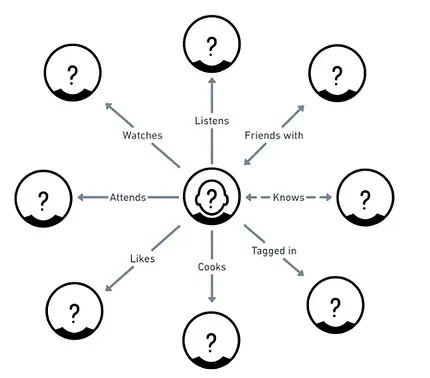Solutions
Teams
Built for your whole team.
Industries
Trusted by all verticals.
Mediums
Measure any type of ad spend
Platform
Use Cases
Many Possibilities. One Platform.
AI and Automation
The Always-on Incrementality Platform
Teams
Built for your whole team.
Industries
Trusted by all verticals.
Mediums
Measure any type of ad spend
Use Cases
Many Possibilities. One Platform.
AI and Automation
The Always-on Incrementality Platform

Marketers know all too well the challenges of cutting through the noise and balancing the perfect combination of science and art when delivering their message. Yet, 2021 hit marketers with an even greater challenge: not being able to identify WHO they were targeting.
This is the result of the eradication of IDFA. Previously, advertisers had access to 1st party app information which they could match with 3rd party data and analyze users activity, habits, and lifestyle. These invaluable insights, while not identifiable, provided a deeper understanding of the user’s demographics, location, likes, interests and behaviors. This information allowed brands to create user profiles which they could then use to tailor the right message to the right person. This process is similar to how websites use cookies to get a better understanding of visitors,catering their ads and messaging to bring curated content to them. Note that the metrics used for this were derived from last-click attribution.


Since the WHO has been removed from the equation, Marketers have no choice but to focus on the where and how. Advertisers now need to spread their ad spend to ensure that they are targeting the “right audience” across multiple touchpoints to hone in on which channels and campaigns are truly bringing value.
Once again, the advertiser is faced with a new challenge: shifting the mindset that value is not merely measured through last-click attribution. Last- click attribution only provides you insights as to which was the last channel the user interacted with before completing the purchase. But, it doesn't take into account any of the previous steps that led them to make their final decision. Understanding the lifecycle that the user has gone through to get to this last step is important and this why incrementality matters.
Incrementality is a term for measurement which provides the true effectiveness of all advertising activities. If marketing performance is solely looked at from the last activity that took place, it would divide the full marketing mix. This form of measurement would infer that the only reason someone made the purchase is because of that final banner - not taking into account any marketing activities that are running in parallel (online & offline).Additionally, it does not consider any pre-existing information that the user has of your brand that could have influenced their decision-making process. The process is just not that simple , correlation does not mean causation.
A user doesn’t go from seeing and clicking a banner for the first time - no matter how beautiful the creative is - to spending hundreds, if not thousands, of dollars on your product(s). Similar to many things in life, the process is far more complex. Our decision-making process is influenced by various elements and runs in parallel with the sales/marketing funnel. If your brand is advertising through each stage of the funnel, then the user will have different influences prior to making the final purchase. These influences can be brand awareness from previous campaigns (online or offline), word of mouth, user reviews, and, of course, context of when the “last- click ad” is presented.
In marketing - correlation vs. causation is similar to budget spent vs. new sales. But, this is also deceiving. In numerous cases, we have seen first-hand when advertisers have dropped their budget spent to $0 , only to find out that their sales numbers didn’t change at all or vice-versa or increased budgets that ended up cannibalizing their organic lift.
In the digital marketing space and, in some cases, for offline marketing activity- everything is trackable! It is crucial to know which touchpoints truly drove conversion and which were noise. We have a great resource that goes into depth on how this works and the differences between what the different types of measurements are.

In the digital marketing space and, in some cases, for offline marketing activity- everything is trackable! It is crucial to know which touchpoints truly drove conversion and which were noise. We have a great resource that goes into depth on how this works and the differences between what the different types of measurements are Incrementality measurement allows you to not only identify which channels you should be increasing your budgets with to get the greatest impact, but also how all l of this can be done without pausing and restarting multiple times. This is why incrementality measurement provides the marketer with a more holistic understanding of all their efforts. This gives the advertiser more control and facilitates making quick decisions on how to optimize any of their campaigns across any channel.
INCRMNTAL is an incrementality measurement platform allowing marketers to measure the incremental value across their marketing activities. The platform is an unbiased software utilizing causal data science to provide advertisers with measurement against the marketing KPIs that are important for them to measure. The platform requires no user-level data to provide measurements, and allows marketers to measure activities without having to perform any experiments.
If you want to learn more, visit INCRMNTAL or book a demo today!

Maor is the CEO & Co-Founder at INCRMNTAL. With over 20 years of experience in the adtech and marketing technology space, Maor is well known as a thought leader in the areas of marketing measurement. Previously acting as Managing Director International at inneractive (acquired by Fyber), and as CEO at Applift (acquired by MGI/Verve Group)